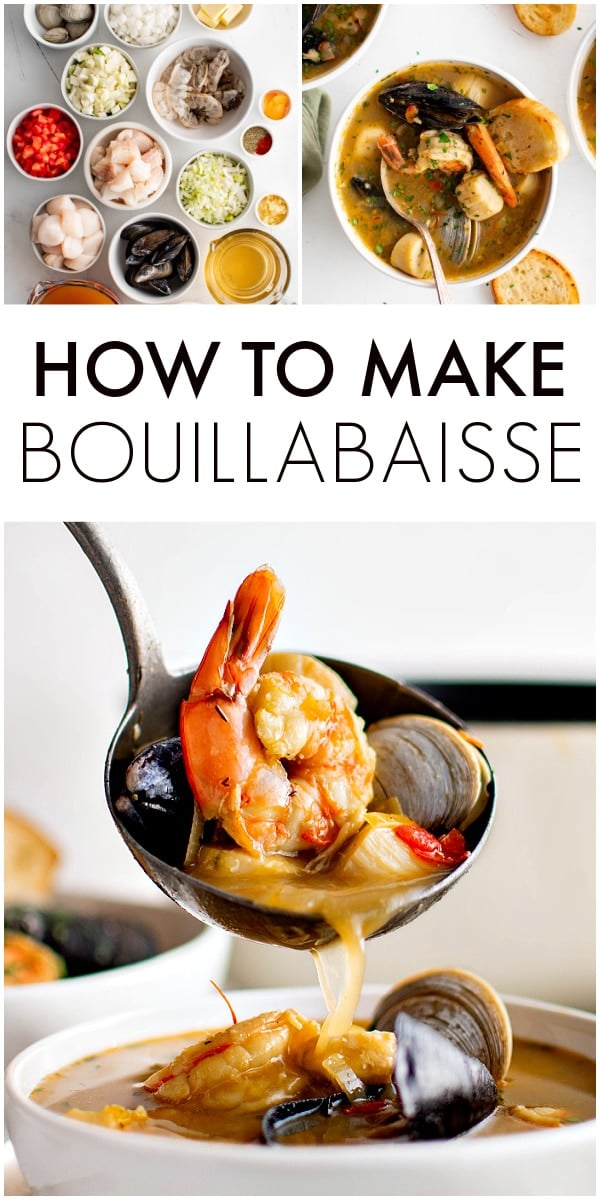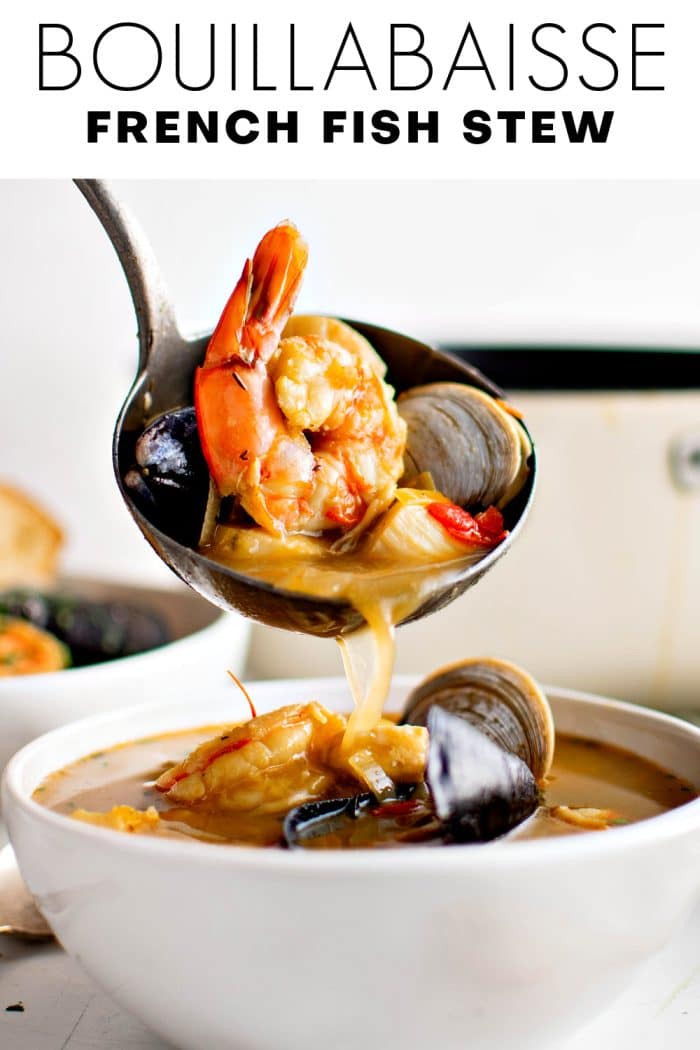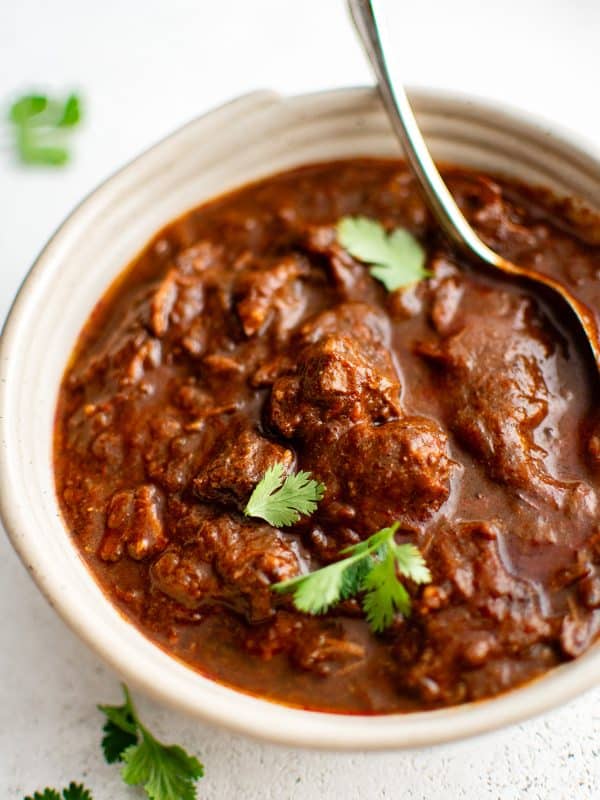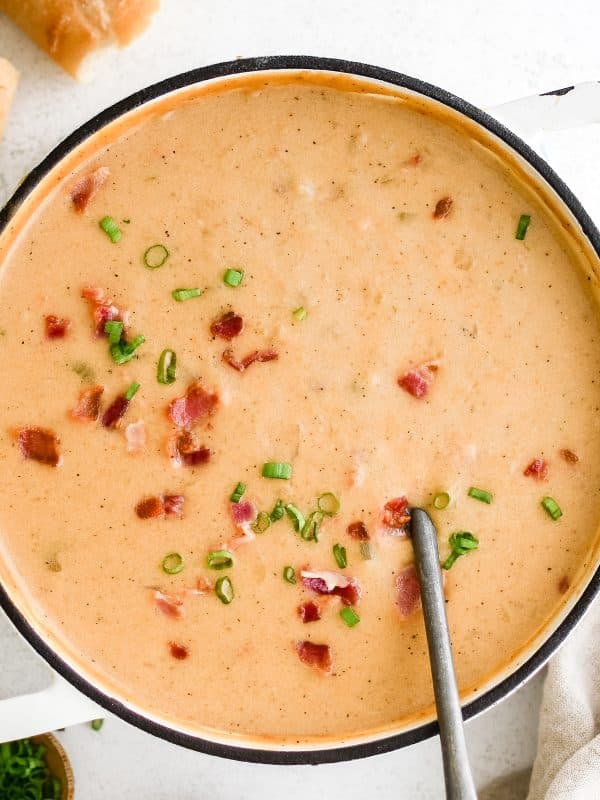This post may contain affiliate links. See my disclosure policy.
This classic Bouillabaisse is a traditional French-inspired fish soup filled with fresh shrimp, scallops, and mussels. So flavorful and ready in just over an hour!
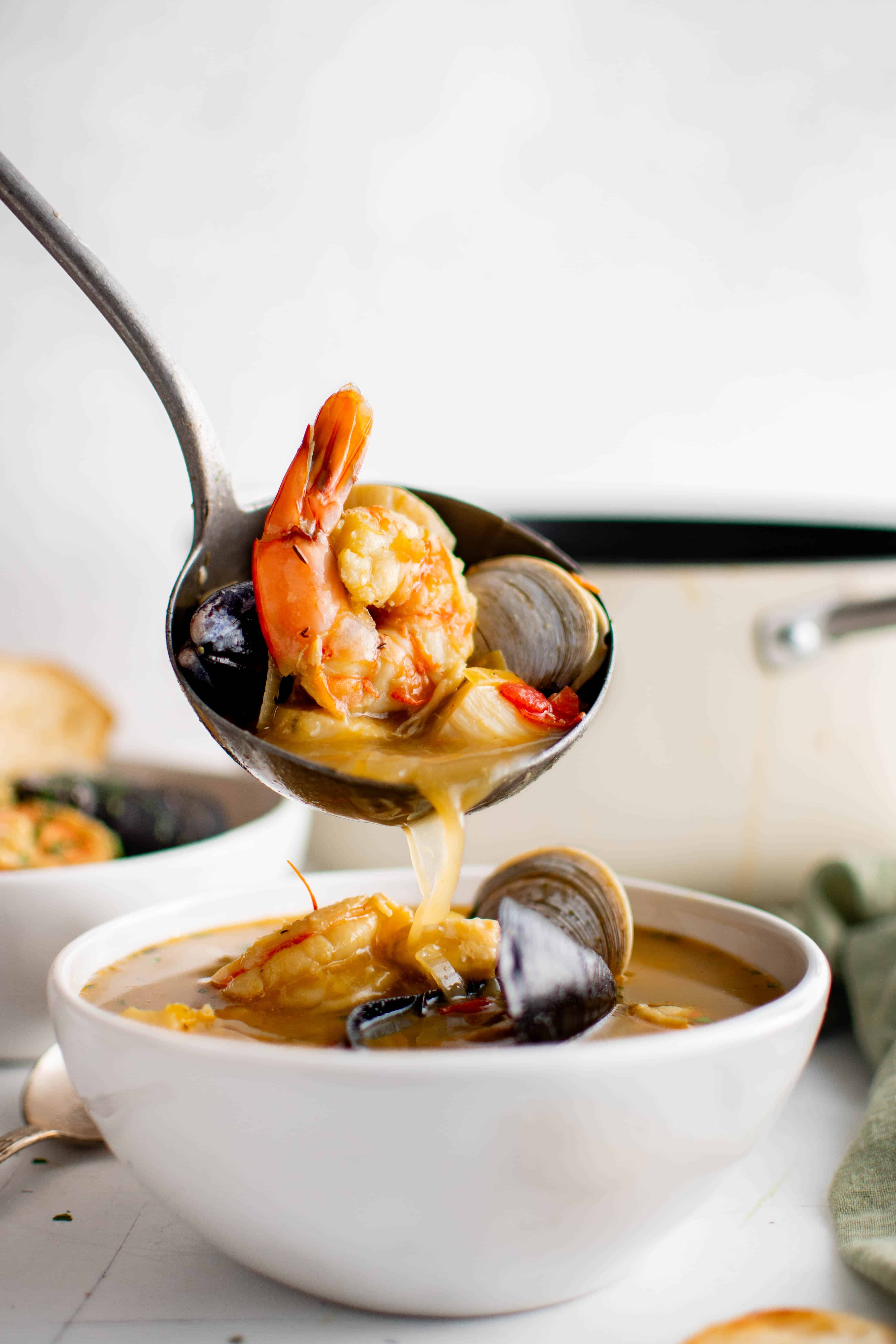
What is Bouillabaisse?
Bouillabaisse is a traditional fish stew originating from the city of Marseille in the Provence region of France. Originally a Fisherman’s stew, It would have been made from the catch of the day that wasn’t suitable for selling, usually bony rockfish. Over the years, however, bouillabaisse has been refined into the elegant stew we know today.
Bouillabaisse gets its name from how it’s prepared: the broth is first boiled (“bouillir” in French), then various types of fish and possibly shellfish are added one by one, each time bringing the broth back to a boil (“abaissé“). The ingredients are not added all at once; instead, the broth is first boiled, and then the fish are added one by one, reducing the heat each time.
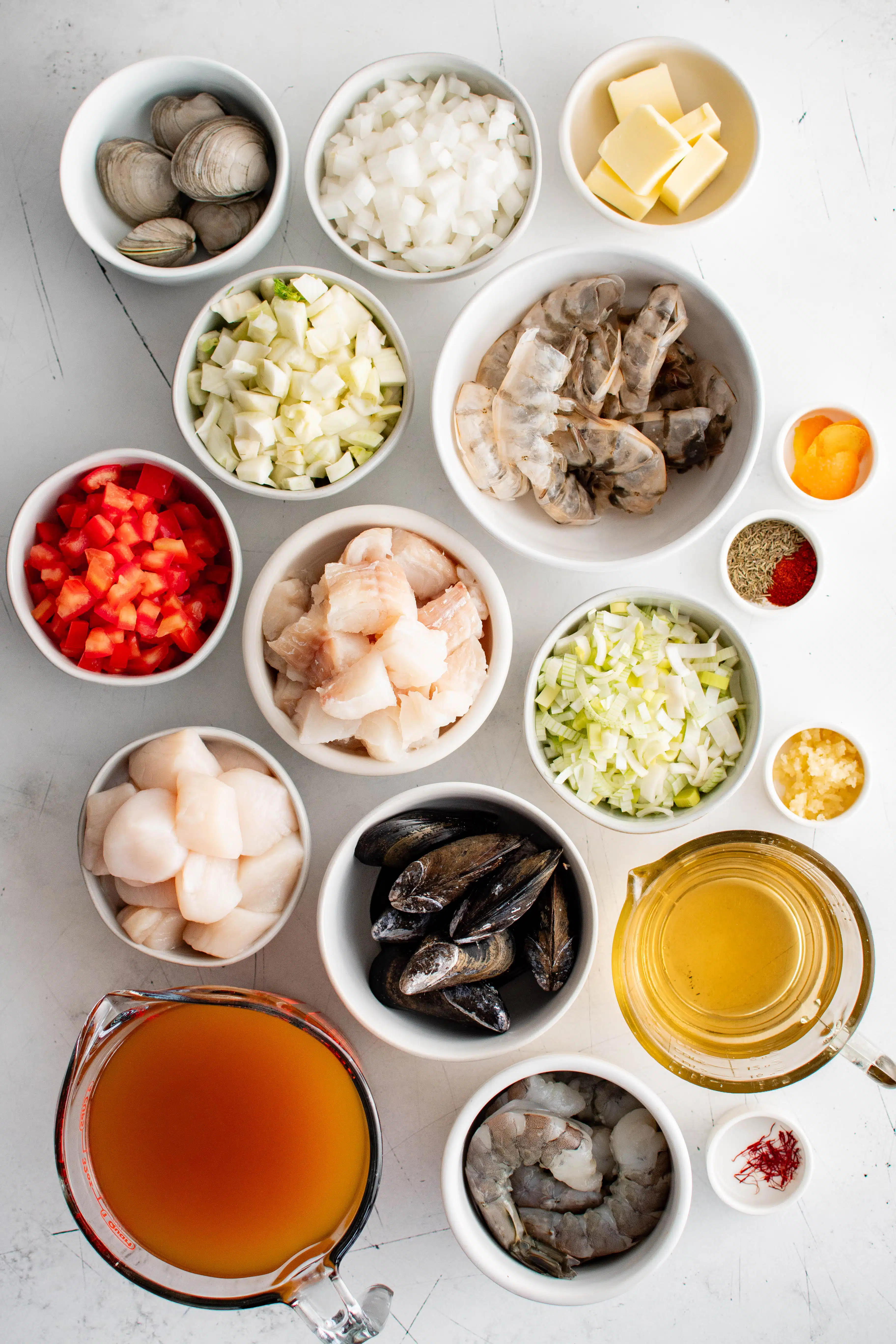
Ingredients in Bouillabaisse
The key ingredients in bouillabaisse include the following:
- Various Types of Fish: Bouillabaisse typically uses at least three or more types of fish based on what’s fresh and available. Popular options include rockfish, sea bream, John Dory, and European conger. Of course, here in the States, we need to modify. Try using a combo of cod, red snapper, sea bass, haddock, mullet, mahi mahi, and grouper.
- Shellfish: Mussels, crabs, and even sea urchins can be added. Shrimp shells may be added to make a more flavorful seafood broth.
- Vegetables: The stew generally contains some combination of onions, tomatoes, leeks, fennel, celery, and bell peppers.
- Herbs and Spices: Garlic, saffron, paprika, bay leaves, thyme, and orange peel.
- Seafood Broth: The broth can be store-bought, homemade, or a combination of both (as with this recipe). Homemade broth is usually made with a stock of veggies, shrimp shells, fish bones, or fresh fish.
How to Make Bouillabaisse
To make bouillabaisse at home, start by making your homemade seafood broth. This can be done the day before or in bulk, freezing leftovers for later use in other recipes such as fish soup and Manhattan clam chowder.
Prepare your homemade seafood stock:
Simmer the clam juice or fish stock in a large pot with the orange peel, half of a leek, half of a fennel bulb, half of the onion, five large shrimp, and 2 pounds of shrimp shells, fish trimmings, or fish bones for 30-45 minutes. Remove from heat. Work in batches to blend the stock in a large blender until smooth. Strain the broth through a fine-mesh sieve (lined with cheesecloth – optional) over a bowl, separating the solids from the liquid. Set aside.
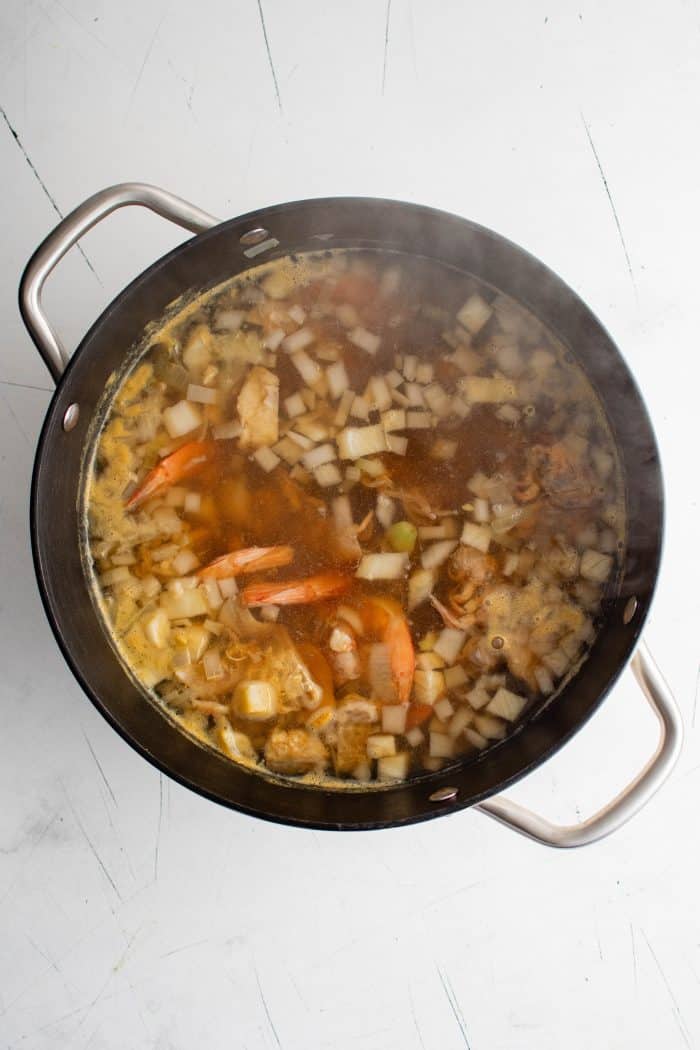
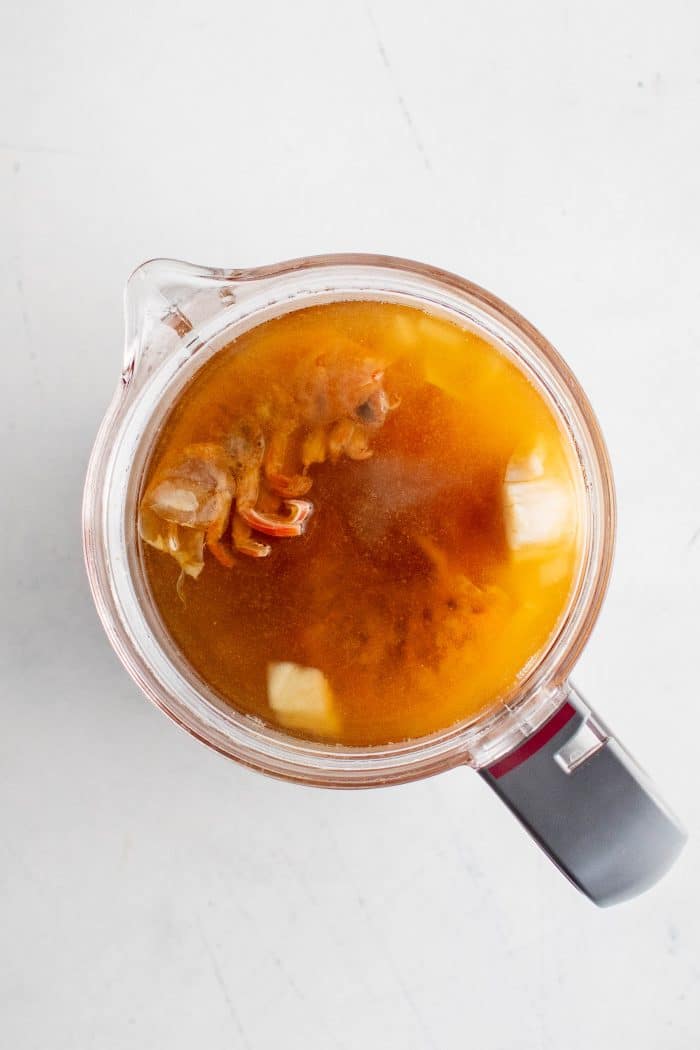
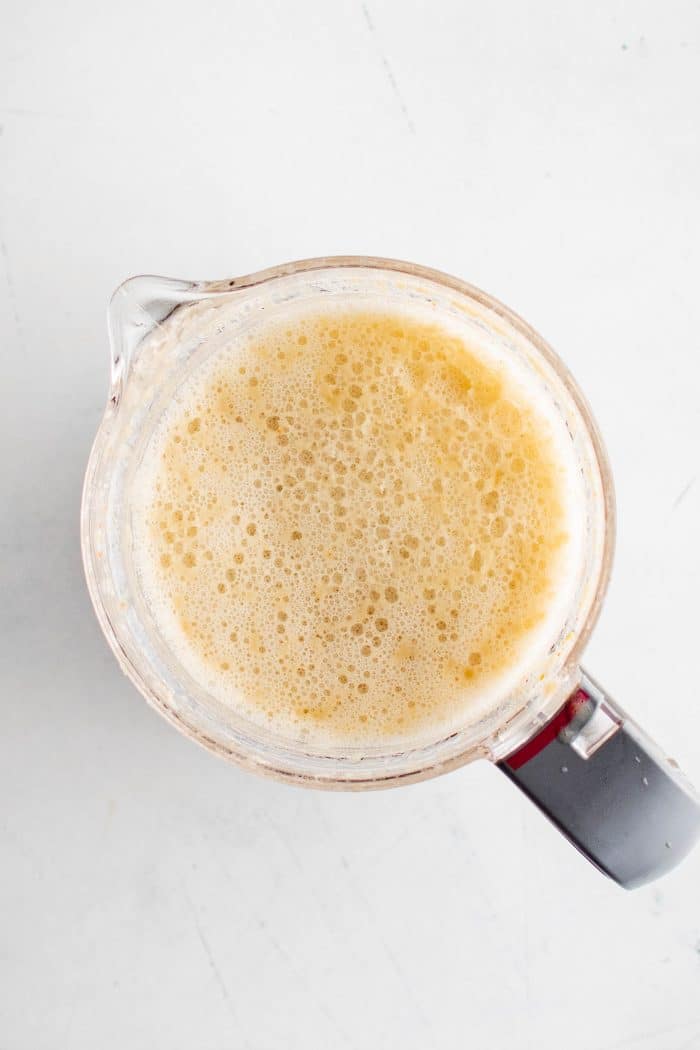
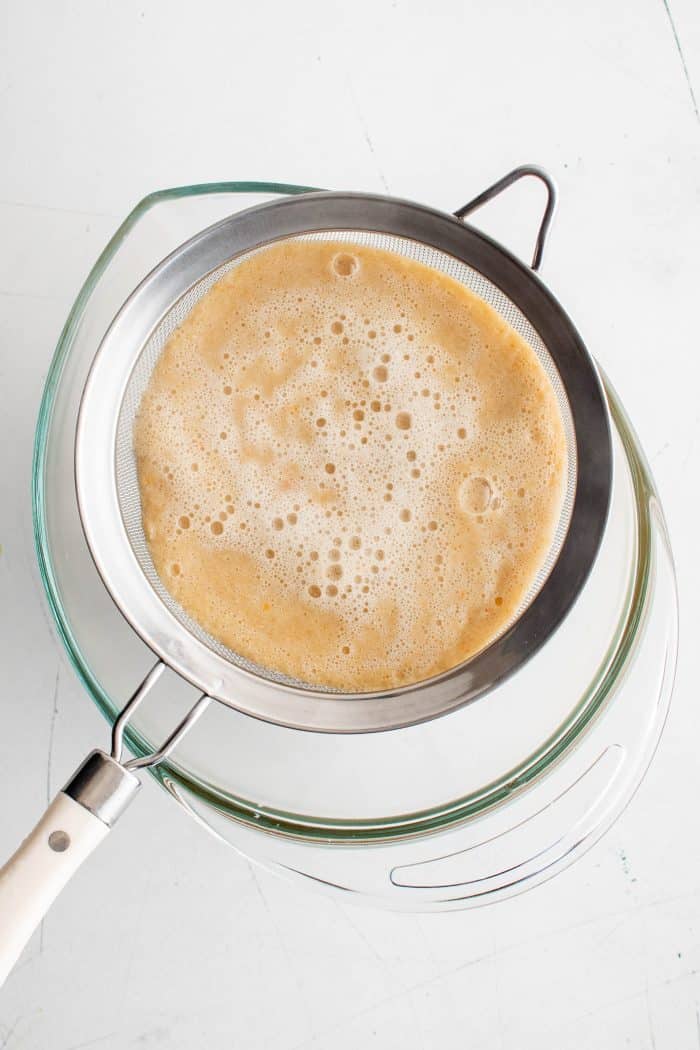
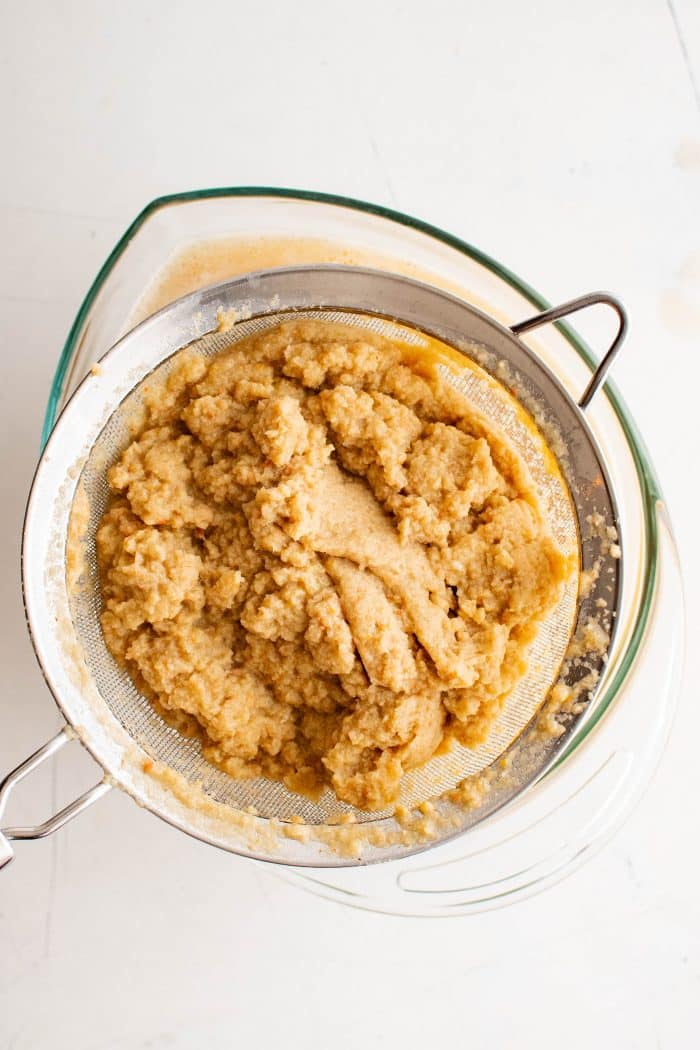
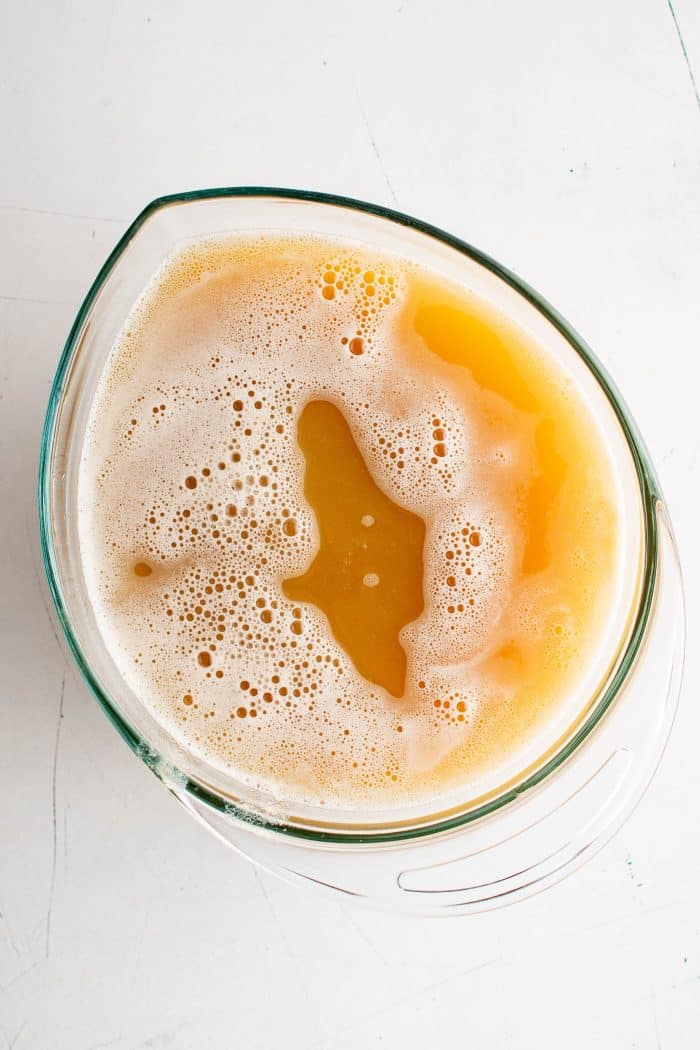
Return the pot to medium heat. Melt the butter and sauté the remaining leek, fennel, and onion until softened and translucent. Stir in the garlic and cook for 30 seconds or until fragrant. Stir in the chopped tomatoes and continue to cook until the tomatoes start to break down. Stir in the wine and bring to a gentle simmer. Cook for about five minutes or until reduced before adding the dried thyme, paprika, and saffron.
Pour in the seafood stock and bring to a low boil. First, add any clams and mussels to the pot. Cover, and cook until they begin to open (approximately 5-10 minutes). Discard any clams and mussels that do not open. Next, add the fish. Cook for about 5 minutes before finally adding the scallops and shrimp. Cook, covered, for an additional 5 minutes, but take care not to overcook the shrimp—season with salt and black pepper to taste.
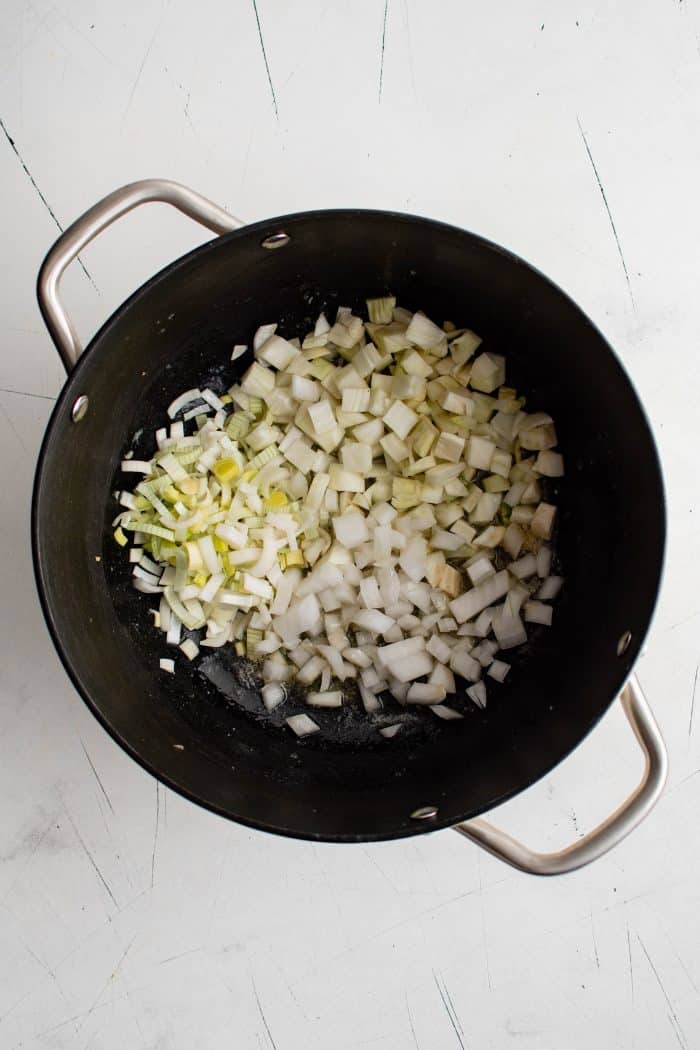
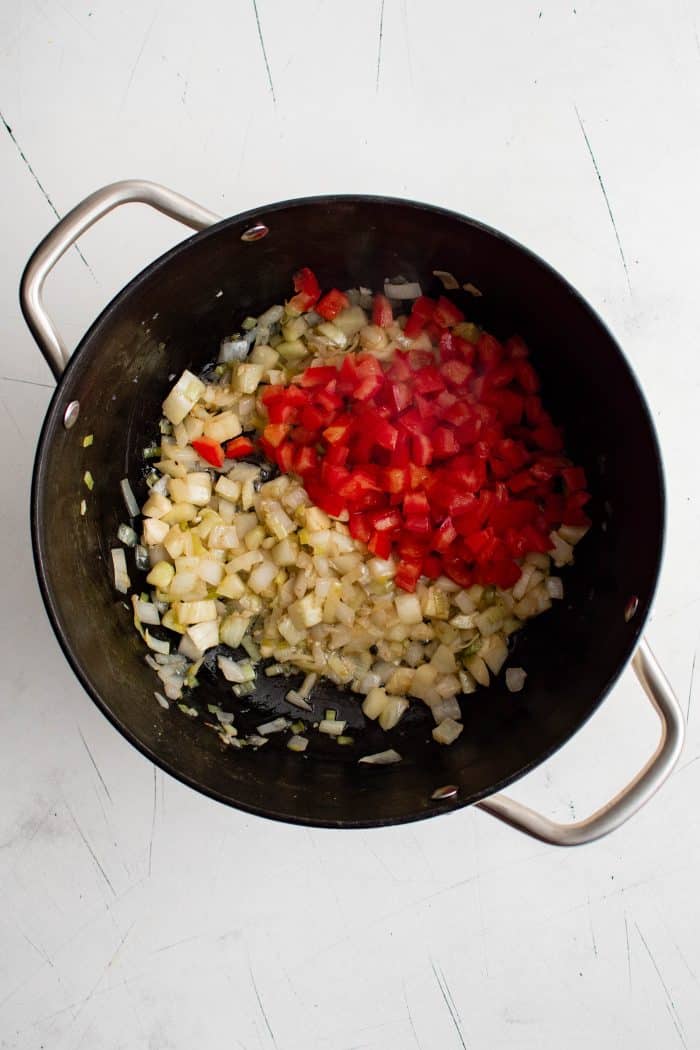
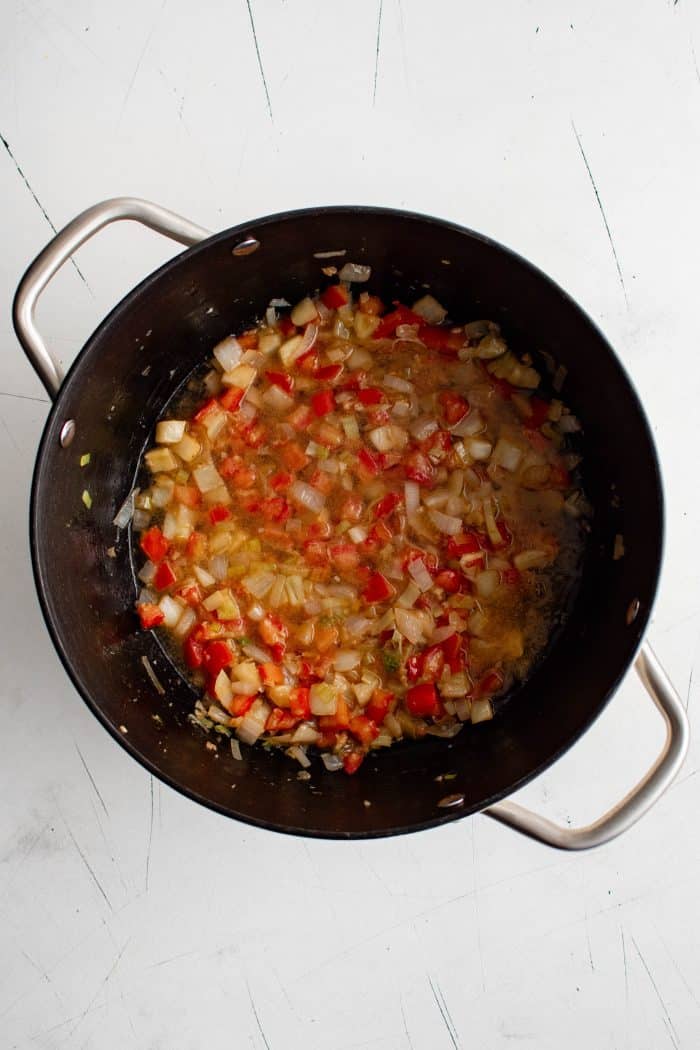
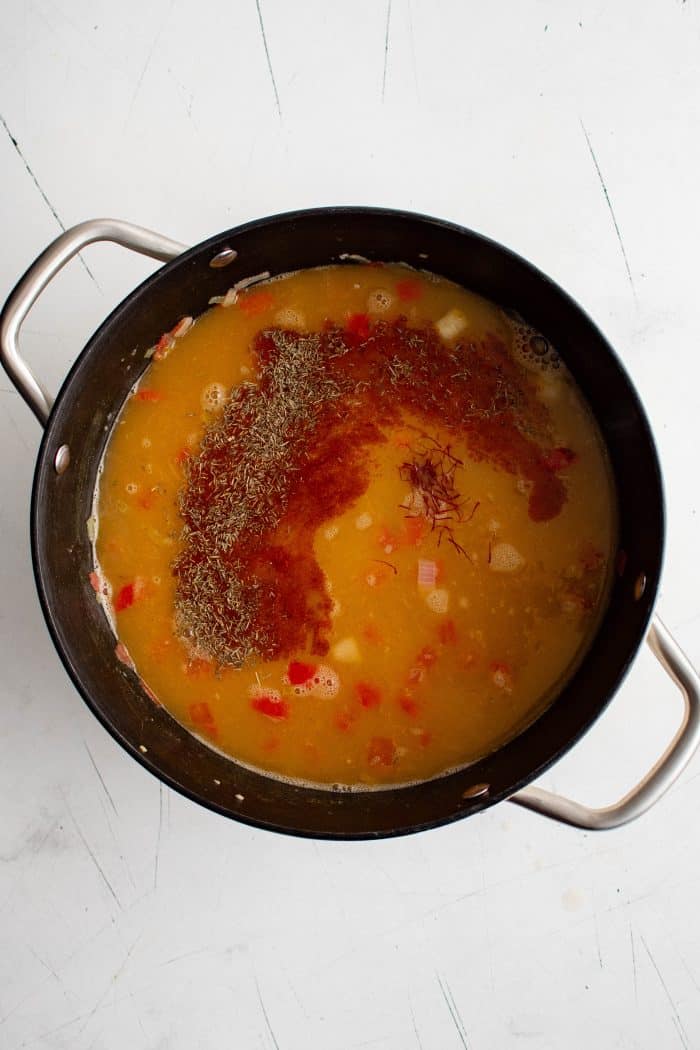
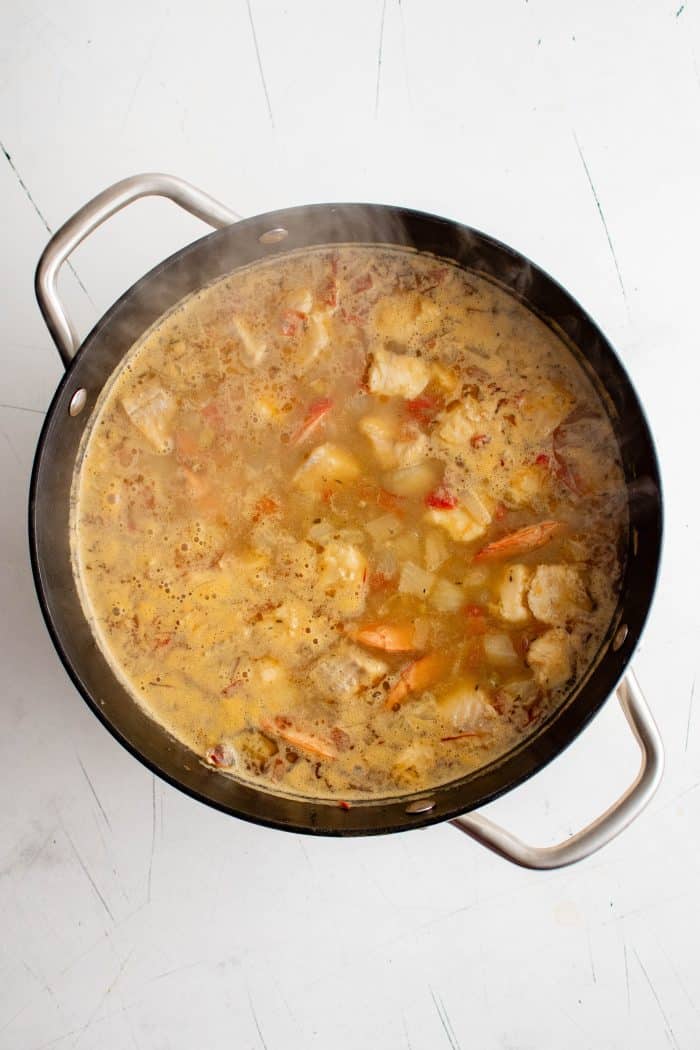
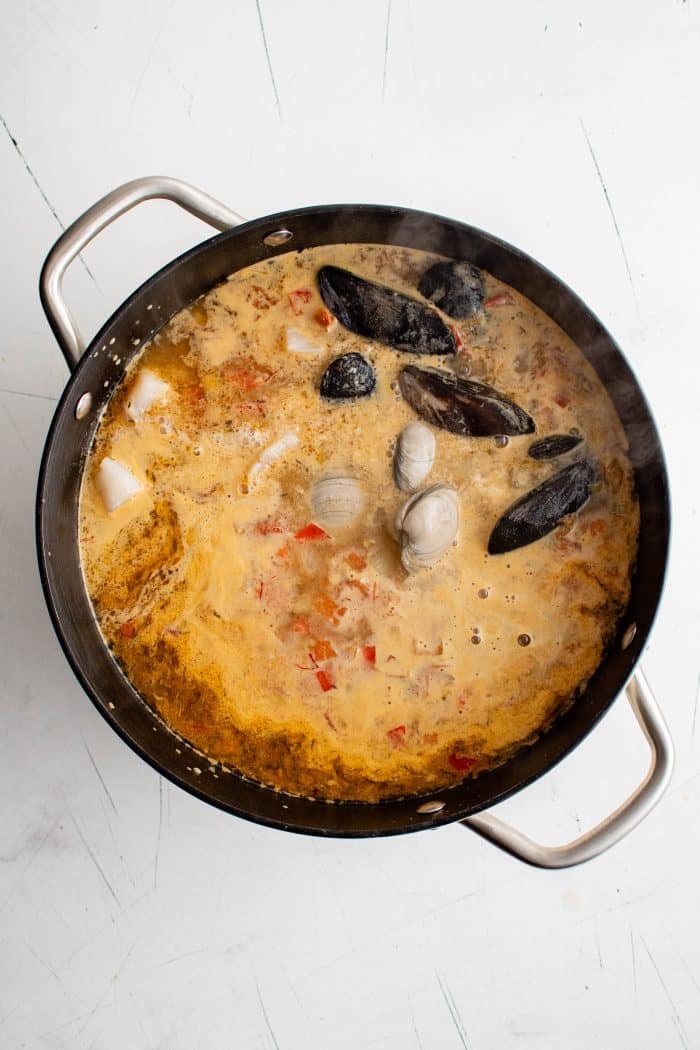
Bouillabaisse vs. Cioppino
They are both seafood stews, but what makes them different?
Bouillabaisse is a hearty French stew, much like cioppino, but it is unique in that it contains saffron. The broth, while it contains some tomatoes, is not considered a true tomato-based broth. Other defining characteristics include the use of Provençal herbs and spices, orange peel, local Mediterranean fish, potatoes, and fennel.
Cioppino originates in San Francisco, California, and is made with a rich and comforting tomato-based broth. It comes filled with local “catch of the day” seafood native to the west coast of California. Most of the shellfish is often served in the shell.
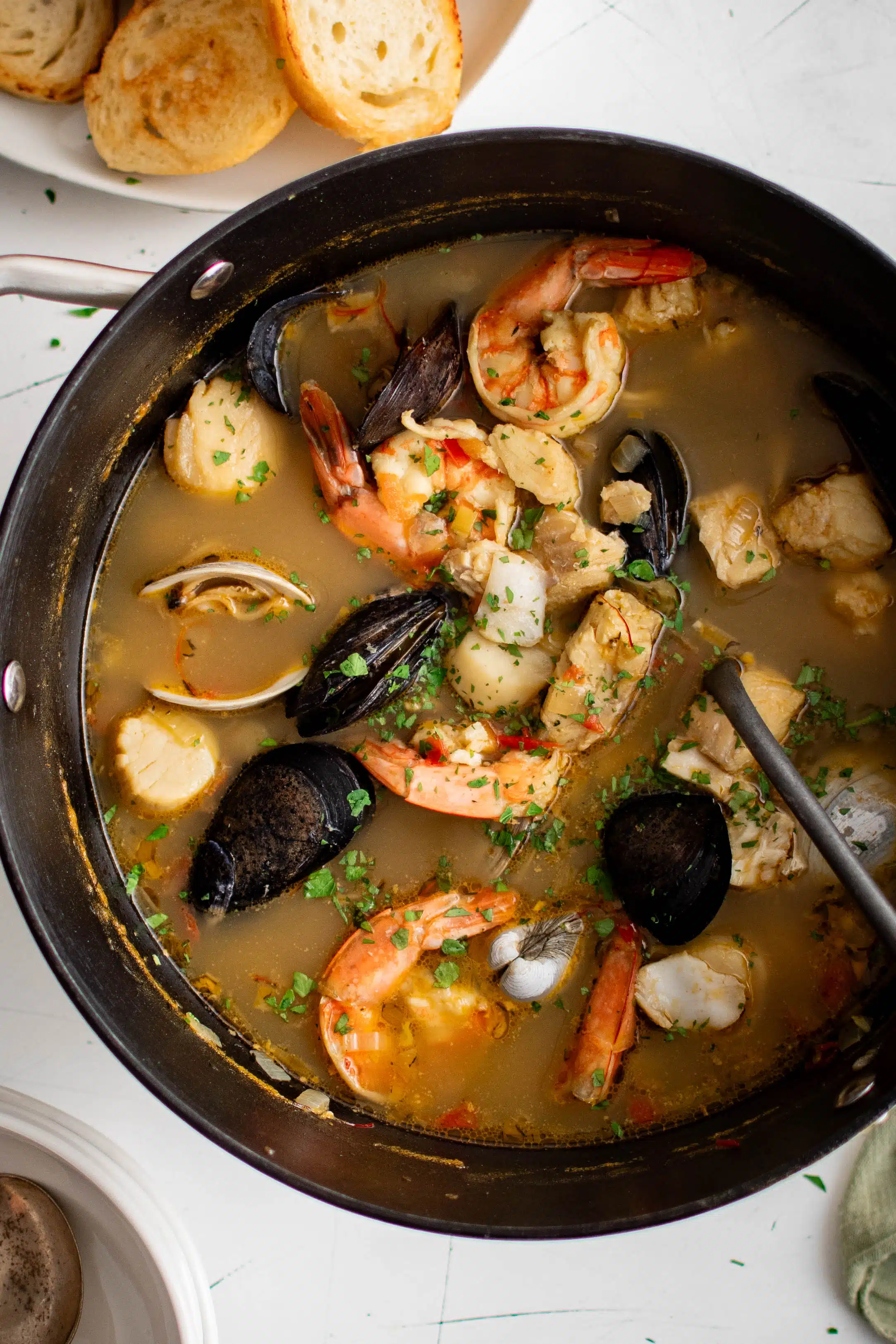
How to Serve Bouillabaisse
There are a couple of ways to serve bouillabaisse. You can serve it simply, with some crusty French bread and a simple side salad, or you can serve it traditionally by separating the broth and the seafood.
To serve in the traditional method:
- Strain the broth into a large serving dish (ensuring it’s kept warm). Place the fish and other seafood on a separate platter.
- First course: Ladle the broth into individual bowls and soak bread into the broth. Or, spread rouille on the bread, place it at the bottom of the bowl, and ladle the broth over it.
- Second course: Once the broth is finished, serve the fish and seafood. Individual diners can select their preferred pieces of fish and shellfish from the communal platter.
What is rouille? It is a traditional Provençal sauce meaning “rust” in French. Base ingredients include garlic, olive oil, saffron, red pepper, or chili for a bit of heat, and stale bread or potatoes as a thickener. Some versions may also incorporate egg yolk, making it more mayonnaise-like in consistency.
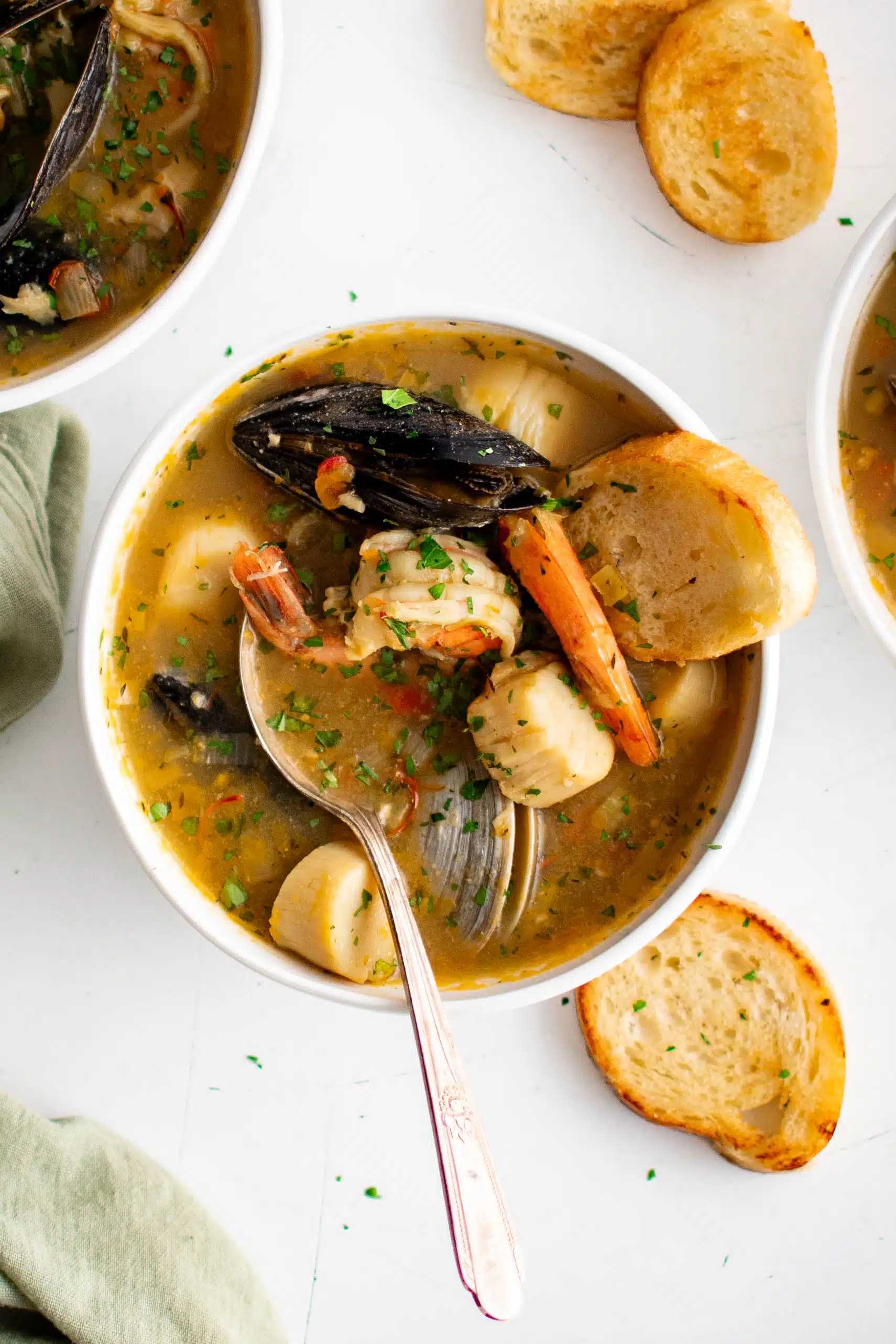
Storage, Freezing, and Reheating
I personally think that bouillabaisse tastes even better the following day. Here are some tips for the best possible taste a texture of your stew.
Leftovers: For best results, add only as much shrimp as you plan to eat right away. The fish will flake apart as it’s reheated, but that’s what makes the overall flavor of the broth that much more flavorful the next day. Reheat to a boil before serving, and enjoy within four days.
Freezing: For best results, freeze before adding any seafood to the broth. Seafood that has been frozen, cooked, frozen, and then cooked again will taste funky and taste rubbery. Gently thaw the broth. Once boiling, add the fish and shellfish as instructed.
More Fish and Shrimp Recipes,
- Fish Soup
- Easy Mahi Mahi Recipe with Lemon Garlic Sauce
- Norwegian Salt Cod Stew (Bacalao)
- Shrimp Taco Recipe
- Poke Bowl Recipe
- Mediterranean Baked Fish with Artichokes and Olives
If you try making this French Bouillabaisse Recipe, please leave me a comment and let me know! I always love to hear your thoughts.
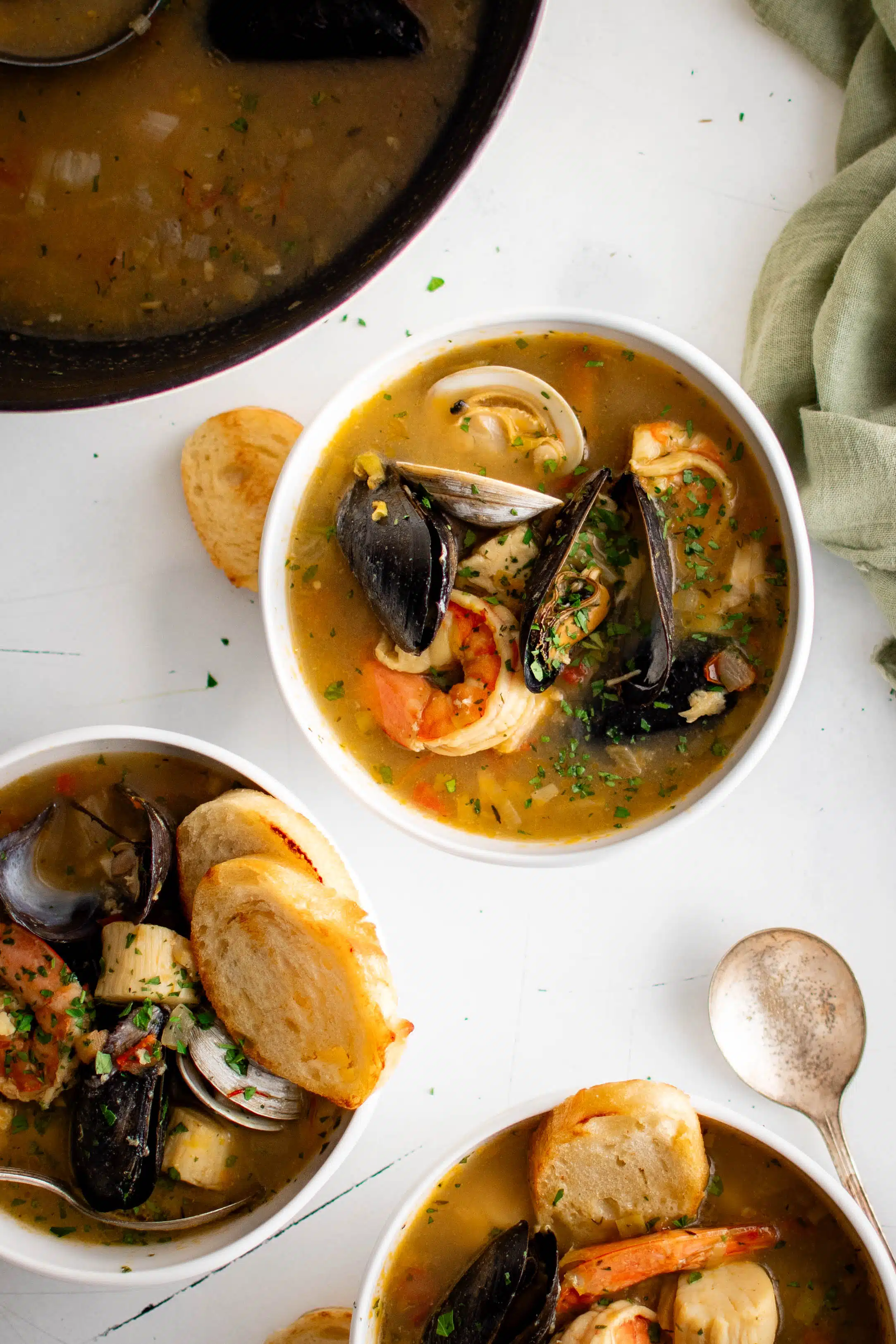

Bouillabaisse Recipe
Ingredients
- 6 cups clam juice or fish stock
- 2 pounds shrimp shells, fish trimmings, fish bones, for the broth
- 1 orange peel
- 1 leek, white part only, diced, divided
- 1 fennel bulb, white part only, diced, divided
- 1 large white onion, diced, divided
- 4 tablespoon butter
- 5 cloves garlic, minced
- 3 tomatoes, seeded and chopped
- 1 cup dry white wine
- ½ teaspoon dried thyme
- ½ teaspoon paprika
- ¼ teaspoon saffron threads
- 2 pound white fish filets , haddock, halibut, cod, snapper
- 5 large scallops
- 3 pounds shellfish (shrimp, scallops, mussels), shell the shrimp and scrub the mussels
Instructions
For the Homemade Seafood Stock
- Combine the clam juice or fish stock, orange peel, half of the leek, half of the fennel, half of the onion, five large shrimp, and 2 pounds of shrimp shells, fish trimmings, and fish bones. Simmer the mixture over medium to medium-low heat for about 30-45 minutes to infuse the flavors.
- Remove from heat and let it cool slightly. Transfer the ingredients to a blender or food processor and blend until smooth (work in batches if necessary).
- Place a fine-mesh sieve (line with cheesecloth – optional) over a bowl and strain the blended mixture to separate the liquid from any solids. Set aside the strained seafood broth. Set aside.
For the Bouillabaisse
- Wipe out the pot with a damp paper towel and return to medium heat. Melt the butter. Add the second half of the leek, fennel, and onion, and sauté until softened and translucent. Stir in the garlic and cook for 30 seconds or until fragrant.
- Add the chopped tomatoes to the vegetables. Continue to cook until the tomatoes start to break down.
- Stir in the wine and bring to a gentle simmer. Cook for about five minutes, or until reduced.
- Add the dried thyme, paprika, and saffron, stir well to combine, and let the flavors meld together for 2 minutes. Stir occasionally to prevent burning.
- Pour the strained, homemade seafood broth back into the pot and bring to a low boil.
- Add the clams and mussels to the pot, first. Cover, and cook until they begin to open (approximately 5-10 minutes). Discard any clams and mussels that do not open. Add the fish and cook for 5 minutes, gently mixing to combine. Next, add the scallops and shrimp, and cook, covered, for 5 minutes.
- Taste and adjust the seasoning with salt and black pepper to taste.
- Garnish with freshly chopped parsley and serve with crispy baguette slices if desired.
Nutrition
Nutrition information is automatically calculated, so should only be used as an approximation.
